https://github.com/cran/spatstat
Tip revision: c27b09aa254f82f4c3f28b48aba13ab8adc65d42 authored by Adrian Baddeley on 10 March 2016, 17:55:24 UTC
version 1.45-0
version 1.45-0
Tip revision: c27b09a
discretise.Rd
\name{discretise}
\alias{discretise}
\title{
Safely Convert Point Pattern Window to Binary Mask
}
\description{
Given a point pattern, discretise its window by converting it to a
binary pixel mask, adjusting the mask so that it still contains all
the points.
}
\usage{
discretise(X, eps = NULL, dimyx = NULL, xy = NULL)
}
\arguments{
\item{X}{A point pattern (object of class \code{"ppp"}) to be converted.}
\item{eps}{(optional) width and height of each pixel}
\item{dimyx}{(optional) pixel array dimensions}
\item{xy}{(optional) pixel coordinates}
}
\details{
This function modifies the point pattern \code{X} by converting its
observation window \code{Window(X)} to a binary pixel image (a window
of type \code{"mask"}). It ensures that no points of \code{X} are
deleted by the discretisation.
The window is first discretised using \code{\link{as.mask}}.
It can happen that points of \code{X} that were inside the original
window may fall outside the new mask.
The \code{discretise} function corrects this by augmenting the mask
(so that the mask includes any pixel that contains a point of the pattern).
The arguments \code{eps}, \code{dimyx} and \code{xy}
control the fineness of the pixel array. They are passed to
\code{\link{as.mask}}.
If \code{eps}, \code{dimyx} and \code{xy} are all absent or
\code{NULL}, and if the window of \code{X} is of type \code{"mask"}
to start with, then \code{discretise(X)} returns \code{X} unchanged.
See \code{\link{as.mask}} for further details
about the arguments \code{eps}, \code{dimyx},
and \code{xy}, and the process of converting
a window to one of type \code{mask}.
}
\section{Error checking}{
Before doing anything, \code{discretise} checks that
all the points of the pattern are actually
inside the original window. This is guaranteed to
be the case if the pattern was constructed using \code{\link{ppp}}
or \code{\link{as.ppp}}. However anomalies are possible if the
point pattern was created or manipulated inappropriately.
These will cause an error.
}
\value{
A point pattern (object of class \code{"ppp"}),
identical to \code{X}, except that
its observation window has been converted to one
of type \code{mask}.
}
\author{Adrian Baddeley \email{Adrian.Baddeley@curtin.edu.au}
and Rolf Turner \email{r.turner@auckland.ac.nz}
}
\seealso{
\code{\link{as.mask}}
}
\examples{
data(demopat)
X <- demopat
plot(X, main="original pattern")
Y <- discretise(X, dimyx=50)
plot(Y, main="discretise(X)")
stopifnot(npoints(X) == npoints(Y))
# what happens if we just convert the window to a mask?
W <- Window(X)
M <- as.mask(W, dimyx=50)
plot(M, main="window of X converted to mask")
plot(X, add=TRUE, pch=16)
plot(X[M], add=TRUE, pch=1, cex=1.5)
XM <- X[M]
cat(paste(npoints(X) - npoints(XM), "points of X lie outside M\n"))
}
\keyword{spatial}
\keyword{manip}

